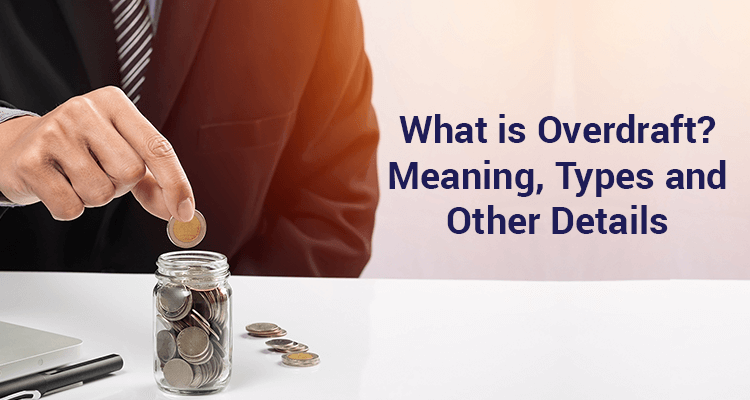Overdraft Facility - Overview, Features And Benefits

Businessmen looking to begin a new venture or to expand their existing businesses need money on a regular basis. Quite often, they don’t have the resources to plough more money into their business.
Similarly, many individuals may also sometimes require extra cash to cover an unforeseen expenditure such as a health emergency or to avoid a cheque bounce and may not be able to get a loan quickly.This is where an overdraft facility can be extremely helpful. Nearly all banks as well as non-banking finance companies (NBFCs) provide overdraft facilities to their clients.
An overdraft can help an entrepreneur meet the working capital or capex needs or any other financial requirements of their business. It can also help individuals, whether salaried people or self-employed professionals, to meet additional expenses, pay their loan installments in case money falls short or cover any other sudden requirement.What Is An Overdraft?
An overdraft is essentially a credit facility that allows a business owner to borrow money from their business’ current account, even if it has a zero balance. In the case of individuals, many banks offer similar overdraft facilities to their customers, especially to those who have a salary account or a savings account with them.
An overdraft is basically a revolving loan where the customer can deposit the money back into the current account and then make a withdrawal later. An overdraft can be used to meet short-term personal or business needs.Main Features Of An Overdraft
An overdraft facility has the following features:1. It allows a business owner or individual to withdraw money from their current account or savings account even if it has a zero balance
2. The loan essentially acts like a credit line
3. Interest is charged only on the overdrawn amount and not on the amount that has not been withdrawn yet
4. An overdraft is mostly availed as a short-term loan
5. The loan is repaid from bank deposits
6. Interest rate is calculated on a daily basis
7. The money disbursed as loan depends on the money in the bank as well as on the relationship the borrower enjoys with the lender
8. The borrower must be a current or savings account holder to avail an overdraft facility
Sapna aapka. Business Loan Humara.
Apply NowTypes Of Overdraft
Various types of overdraft facilities are typically made available to a business owner or individual by good lenders. While these may not be applicable to all borrowers, here are the various types of overdraft facilities that banks and NBFCs typically offer.Overdraft Against Insurance Policy:
This usually depends on the surrender value of an insurance policy, which becomes the collateral in case of default.Overdraft Against Fixed Deposit:
If a borrower maintains a fixed deposit with the bank, they can withdraw money up to a certain fraction of the deposit amount.Overdraft Against Home:
Businessmen or other individuals who are also homeowners can borrow up to half their house’s value as overdraft.Overdraft Against Equity:
A borrower can get this facility by keeping some equity shares as collateral.Overdraft Against Savings Account:
This is available to customers who have a savings account with the bank or NBFC and transact regularly.Overdraft Against Salary:
This is typically for salaried employees who may be having a salary account with the bank.Conclusion
An overdraft facility provided by a well-established lender like IIFL Finance can be a good option for a current or savings account holders as long as they are borrowing relatively smaller sums for a short period of time.
An overdraft is often an ideal solution as the interest is charged only on the amount that is actually borrowed and not on the entire loan that has been sanctioned. This can be good for a small business that is looking to save interest cost and also for a salaried person or a self-employed professional who needs some extra cash urgently.Sapna aapka. Business Loan Humara.
Apply NowDisclaimer : The information in this blog is for general purposes only and may change without notice. It does not constitute legal, tax, or financial advice. Readers should seek professional guidance and make decisions at their own discretion. IIFL Finance is not liable for any reliance on this content. Read more



